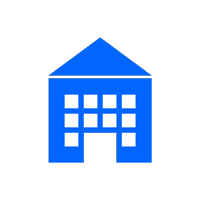![]()
Department of Cardiology
January 15,2024 Update
Introduction
Welcome to our homepage.
This time, we have opened a new website for the Department of Cardiology.
We would like you to take a look from the blue "To Clinical dept. site" link in the
upper right.
We hope that you will feel closer to Saitama Medical University, Saitama Medical
Center.
We are working hard every day to make cardiovascular treatments less invasive for
patients, and we appreciate your continued support.
Greeting from Kawagoe
Welcome to the Saitama Medical University/Saitama Medical Center. I am humbled by
the task we face today as a medical practitioner and grateful to serve as the
medical director of the Department of Cardiology at Saitama Medical
University/Saitama Medical Center. I mainly practice clinical medicine especially at
the ischemic heart disease of interventional cardiology, focusing on the coronary
intervention and minimal invasive remedy as well as an application of the latest
technology into medical devices. I also focused on the education of the medical
practitioner both domestically and internationally by enlightening minimal invasive
practice and infiltrating it into clinical cases. The coronary catheter technology
used to be highly invasive and its damage control was highly delicate practice.
However, from the Twenty-first century, the grace of various technological
advancement of medical devices shine on precision, which directly leads to achieving
the practice with less invasive and less complication. I feel lucky and delighted to
disseminate those new remedies to the world from Japan. I believe my mission is to
achieve our goal, to provide the latest and minimally invasive practice to people in
Kawagoe as well as an education of the cardiologist of the next generation. To
achieve our goal, I humbly request the support from all medical practitioners. Not
only interventional cardiologists, but also cardiovascular surgeons, emergency
physicians, nurse practitioners, radiologists and clinical engineers, and everyone
who participates in the medical community must collaborate to achieve our goal. With
your support, I devote myself to achieve safe and effective treatment as well as
education for the new generation. We are grateful and appreciate your continued
support.
Takashi Matsukage, MD, PhD. : Professor/Chief Director
Patient care at our department
The Department of Cardiology is responsible for the diagnosis and treatment of heart disease. We recommend that those who have symptoms such as when your chest is heavy, painful, is squeezed, you have strong shortness of breath when moving, your pulse becomes faster suddenly or skips a beat visit our outpatient facility. Also, there is a possibility of the heart disease, even for people who have severe swelling but they don't know the reason, or people who have an attack of tunnel vision and losing consciousness. It is recommended that you check the clinic even once. For those who visit us for the first time without a reservation, please complete the front desk process by 11:00 am. Monday through Friday.
If you are coming to the clinic for the first time, you may need an electrocardiogram, a chest X-ray examination, blood collection, and other special inspections as needed. If a cardiac catheter examination is required, the patient will be admitted to perform the checkup and diagnosis. As a result, it can be determined whether oral administration of the medicine, catheter treatment or surgery are required, and catheter treatment will be carried out at the Department of Cardiology. If the patient needs surgery, we will introduce the patient to the Department of Cardiovascular Surgery at our center. Implantation surgery for a pacemaker for arrhythmia, an implantable defibrillator, and a bi-ventricular pacemaker for heart failure are carried out at the Department of Cardiology.
Acute myocardial infarction, unstable angina, etc. require emergency treatment, and many emergency hospitalizations are due to these ischemic heart diseases. Because there is a possibility of acute myocardial infarction when there is heaviness of the chest, pain, and a feeling of pressure which persists for more than 30 minutes to one hour, we recommend they come by ambulance. Because necrosis of the muscles of the heart advance with time, this is a time-sensitive condition. There are occasionally people who have endured this until morning, but if symptoms persist, even if it is not painful or unbearable pain, please come to our Emergency room. In addition, even if the symptoms last only about 5-15 minutes, the symptoms appear with only lighter movement than before, the frequency has increased, the time it takes to recover has become longer, then there is possibility you are in a state where it is easier to transition to myocardial infarction, so we recommend that you come to the hospital as soon as possible. In our department, we are prepared to perform emergency cardiac catheterization and treatment with a 24-hour system, even at night and on holidays, so we can promptly conduct examinations and treatment.
In the case of heart failure, there are cases of trouble breathing and swelling getting worse gradually, but this is a disease where you often have difficulty breathing suddenly and this results in an emergency hospitalization. There are a lot of causes such as valve disease, cardiomyopathy, and high blood pressure, but it is desirable that you come to the hospital ASAP because the cause may also be myocardial infarction. When it comes to heart disease, patience is a taboo. Please visit us according to the "Consultation Guide" on our website.
Main diseases
- Cardiac failure
- Ischemic heart disease (1) Stable exertional angina (2) Coronary spastic angina (3) Acute coronary syndrome (Unstable angina, non-ST elevation myocardial infarction and ST elevation myocardial infarction) (4) Old myocardial infarction, etc.
- Arrhythmia (1) Bradycardia arrhythmia (sick sinus syndrome, atrioventricular block) (2) Supratrioventricular tachycardia (Sinus tachycardia, supraventricular extrasystole, atrial fibrillation, atrial flutter, paroxysmal supraventricular tachycardia) (3) Ventricular tachycardia arrhythmia (Ventricular extrasystole, ventricular tachycardia, multi-focal ventricular tachycardia (torsades de pointes), ventricular fibrillation (4) long QT syndrome, Wolff-Parkinson-White <WPW> syndrome, Brugada syndrome, etc.)
- Valve disease (1) Mitral stenosis and regurgitation (2) Aortic stenosis and regurgitation, etc.
- Myocardial and cardiac membrane disease (1) Idiopathic cardiomyopathy (hypertrophic cardiomyopathy, dilated cardiomyopathy, restrained cardiomyopathy), secondary myocardial disease (2) Acute myocarditis (3) Infectious endocarditis (4) Acute pericarditis, constrictive carditis (5) Cardiac tamponade (6) Cardiac tumors (myxoma), etc.
- Congenital heart disease (1) Atrial septal defect (2) Ventricular septal defect (3) Patent ductus arteriosus (4) Fallot tetralogy, etc.
- Arterial disease (1) Acute aortic dissection (2) Aneurysm (3) Obstructive arteriosclerosis, etc.
- High blood pressure
- Low blood pressure
- Pulmonary thromboembolism, pulmonary infarction
Target Symptoms
- Chest pain, tightness, zonesthesia, heavy feeling, pain in the back
- Palpitations, pulse jumps and is disturbed, faster pulse
- Shortness of breath when moving, difficulty breathing, and breathlessness at night
- Sustained swelling
- Temporary loss of consciousness, dimmed vision
- Fever that persists for a long time for unknown reasons
Treatment results
| Disease name | (Number of cases) |
|---|---|
| Acute myocardial infarction | 144 |
| Heart failure | 195 |
| Acute dissection of aorta | 24 |
| Coronary intervention | 211 |
| Pacemaker and other implantation | 71 |
| Disease name | (Number of cases) |
|---|---|
| Total number | 14,838 |
Medical staff
| Name | Job Title | Position | Specialized Field | Credentials |
|---|---|---|---|---|
| 重城 健太郎 (Jujo Kentaro) 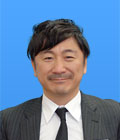
|
Professor | Director Manager Research Chief |
Catheter intervention Heart failure |
Certified physician of the Japanese Society of Internal Medicine Board Certified Member of The Japanese Circulation Society Board Certified Member of Japanese Association of Cardiovascular Intervention and Therapeutics Certified TAVI implanter (Sapien) |
| 井上 芳郎 (Inoue Yoshirou) 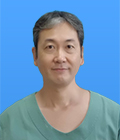
|
Assistant professor | Manager of General Affairs Manager of Outpatient Services |
Catheter intervention Heart failure |
Board Certified Member of the Japanese Society of Internal Medicine,ICD/CRT Board Certified Member of The Japanese Circulation Society Board Certified Member of The Japanese Association of Cardiovascular Intervention and Therapeutics (BMCVIT) |
| 小宮山 英徳 (Komiyama Hidenori) 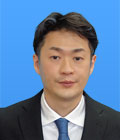
|
Assistant professor | Assistant Research Director Catheterization Lab Chief |
Cardiovascular intervention | Board Certified Member of the Japanese Society of Internal Medicine Fellow of the Japanese Society of Internal Medicine Board Certified Member of The Japanese Circulation Society Board Certified Member of Japanese Association of Cardiovascular Intervention and Therapeutics, |
| 石原 嗣郎 (Ishihara Shiro) 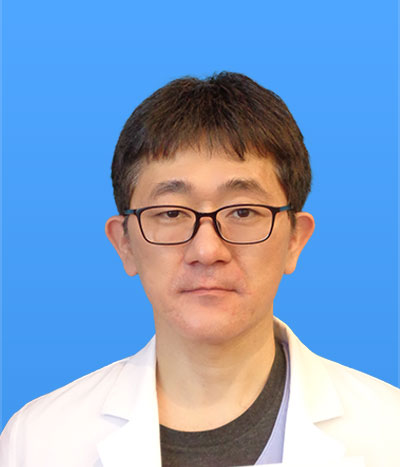
|
Assistant professor | Chief of Education Manager of Inpatient Services |
Heart failure Cardiovascular implantable electronic device treatment |
Board Certified Member of the Japanese Society of Internal Medicine Fellow of the Japanese Society of Internal Medicine ICD/CRT |
| 阿部 拓朗 (Abe Takuro) 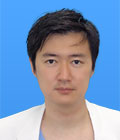
|
Assistant professor | Catheter intervention Heart failure |
Certified physician of the Japanese Society of Internal Medicine Board Certified Member of The Japanese Circulation Society |
|
| 安藤 敏行 (Andou Toshiyuki) 
|
Assistant professor | Cardiology Coronary intervention High blood pressure |
Board Certified Member of the Japanese Society of Internal Medicine | |
| 奥田 希子 (Okuda Nozomiko) 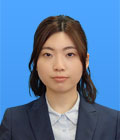
|
Assistant professor | medical staff | Catheter intervention, Heart failure | Board Certified Doctor of Internal medicine,Occupational health physician |
| 河原 勇貴 (Kawahara Yuki) 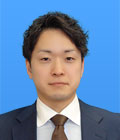
|
Assistant professor | |||
| 小形 円香 (Ogata Madoka) 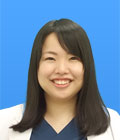
|
Assistant professor | |||
| 長堀 寛司 (Nagahori Hiroshi) 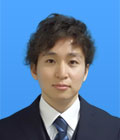
|
Assistant professor | |||
| 神山 哲男 (Kamiyama Tetsuo) 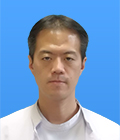
|
Associate professor | Cardiology Ultrasound Medicine Palliative Medicine |
Fellow of the Japanese Society of Internal Medicine(FJSIM) Board Certified Member of the Japanese Circulation Society Board Certified Member of the Japanese Society of Ultrasonics in Medicine |
|
| 石川 昌弘 (Ishikawa Masahiro) 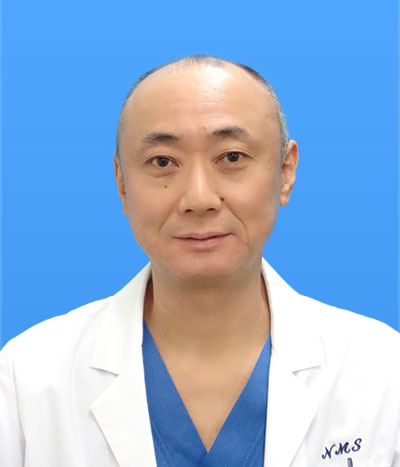
|
Visiting Lecture |
Outpatient clinic
| Department of Cardiology | ||||||
| Monday | Tuesday | Wednesday | Thursday | Friday | Saturday | |
| 午前 | ||||||
| 初診 |
重城 健太郎 (Jujo Kentaro) |
石原 嗣郎 (Ishihara Shiro) |
重城 健太郎 (Jujo Kentaro) |
小宮山 英徳 (Komiyama Hidenori) |
竹下 享典 (Takeshita Kyosuke) |
|
| 阿部 拓朗 (Abe Takuro) |
小宮山 英徳 (Komiyama Hidenori) |
|||||
| 再診 |
神山 哲男 (Kamiyama Tetsuo) |
安藤 敏行 (Ando Toshiyuki) |
重城 健太郎 (Jujo Kentaro) |
|||
| 井上 芳郎 (Inoue Yoshiro) |
||||||
| 午後 | ||||||
| 再診 |
阿部 拓朗 (Abe Takuro) |
奥田 希子 (Okuda Nozomiko) |
小宮山 英徳 (Komiyama Hidenori) |
河原 勇貴 (Kawahara Yuki) |
谷 昂大 (Tani Akihiro) |
|
| 石原 嗣郎 (Ishihara Shiro) |
||||||
| 専門外来 |
心房細動外来 重城 健太郎 (Jujo Kentaro) |
ペースメーカー (交替制) |
||||
土曜日は初診患者を受付ておりません。
To the Medical Institutions
The Department of Cardiology provides medical treatment for ischemic heart disease (myocardial infarction, angina pectoris), heart failure, arrhythmia, cardiomyopathy, valve disease, acute aortic dissection, and pulmonary infarction. We have a lot of emergency cases due to the nature of the target diseases, but we try to accommodate cardiovascular emergencies in the areas of Kawagoe and Higashi Iruma as much as possible. In cooperation with the Department of Emergency and Critical Care Medicine, we actively provide medical service for cases of cardiopulmonary arrest and shock using auxiliary circulation such as PCPS, in conjunction with cardiovascular surgery.
The policy of our department is to perform invasive examinations and treatment (catheter intervention, device implantation, surgery, etc.) only for cases where it is necessary based on the evidence, and we also try to treat with drug therapy as the standard treatment. Coronary artery intervention is used in combination with intra-vascular ultrasound to achieve good therapeutic results. In addition to drug therapy for arrhythmia, we perform pacemaker and defibrillator implantation, and we also implant bi-ventricular pacemakers for intractable heart failure.
Currently, catheter ablation for tachy-arrhythmia is not performed, and the adaptation examples are introduced to facilities such as Saitama Medical University International Medical Center.
Regarding new patient introductions
The outpatient area for the Department of Cardiology is open every day from Monday to Friday, and the reception is open from 8:30am to 11:00am. In addition to a letter of introduction, it would help if you lend us your electrocardiogram, chest X-ray, etc. We have a method called fax introduction, so please confirm by clicking on the "Coordination of local clinics and hospitals room" banner on our website.
Please introduce the patients with a thoracic aorta aneurysm who require surgery to the Department of Cardiovascular Surgery, patients with abdominal aortic aneurysm and peripheral artery disease (arteriosclerosis obliterans) to the Department of Vascular Surgery and patients with high blood pressure without heart complications to the Department of Nephrology and Hypertension.
In the case of an emergency, please call ahead because the duty doctor of the day will see outside the above-mentioned initial reception hours. Please understand that the general ward and CCU may be full and may not be able to cope with another emergency during emergency catheter treatment of myocardial infarction.
The telephone number for the Department of Cardiology introductions and requests is available from 8:30 to 17:30 for the (049-228-3586), and the reception desk during nights and holidays (049-228-3595) is from 17:30 until the following morning. Also, if you suspect you have an acute myocardial infarction, please use the "Myocardial Infarction Hotline" (080-9980-2999) available 24 hours.




